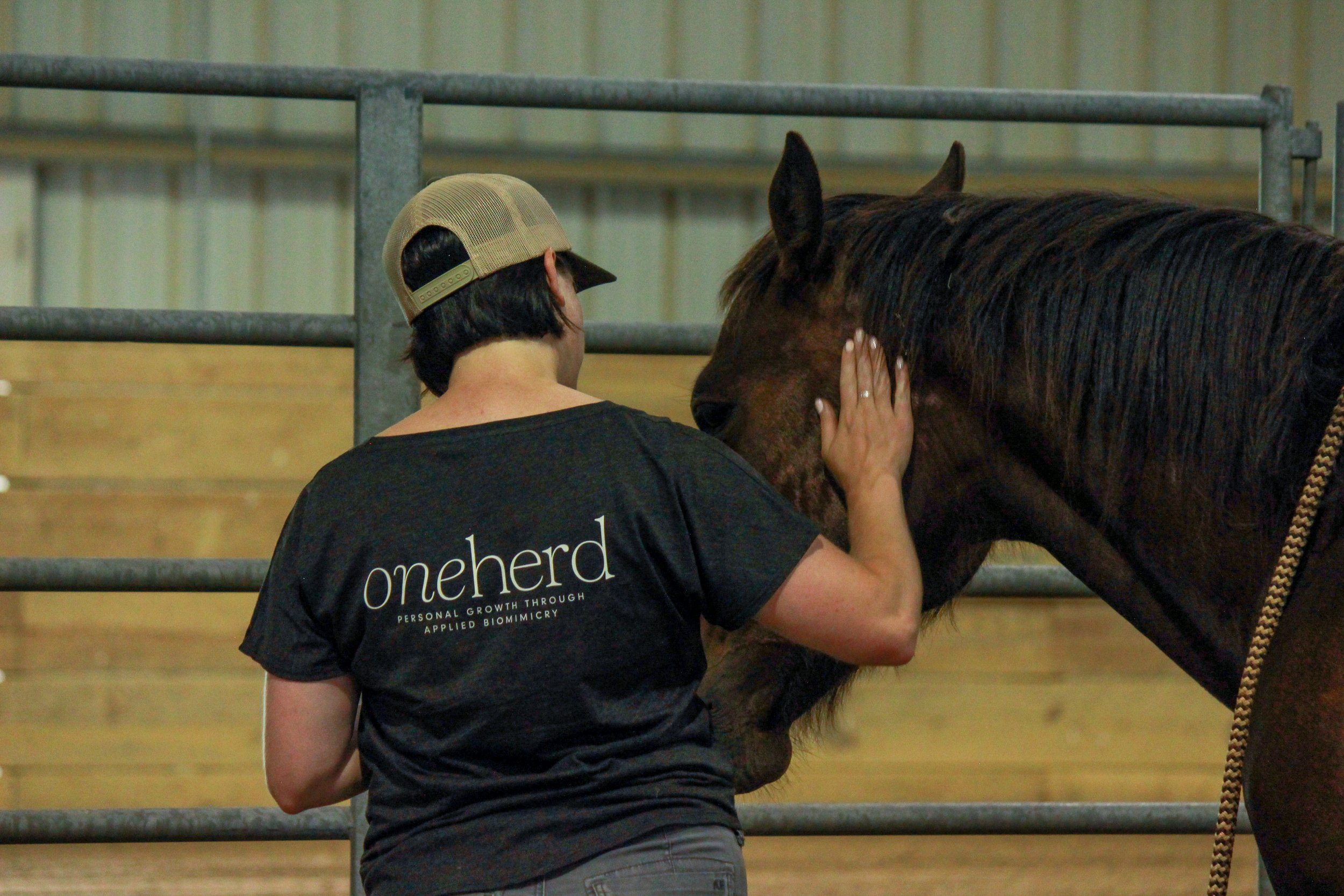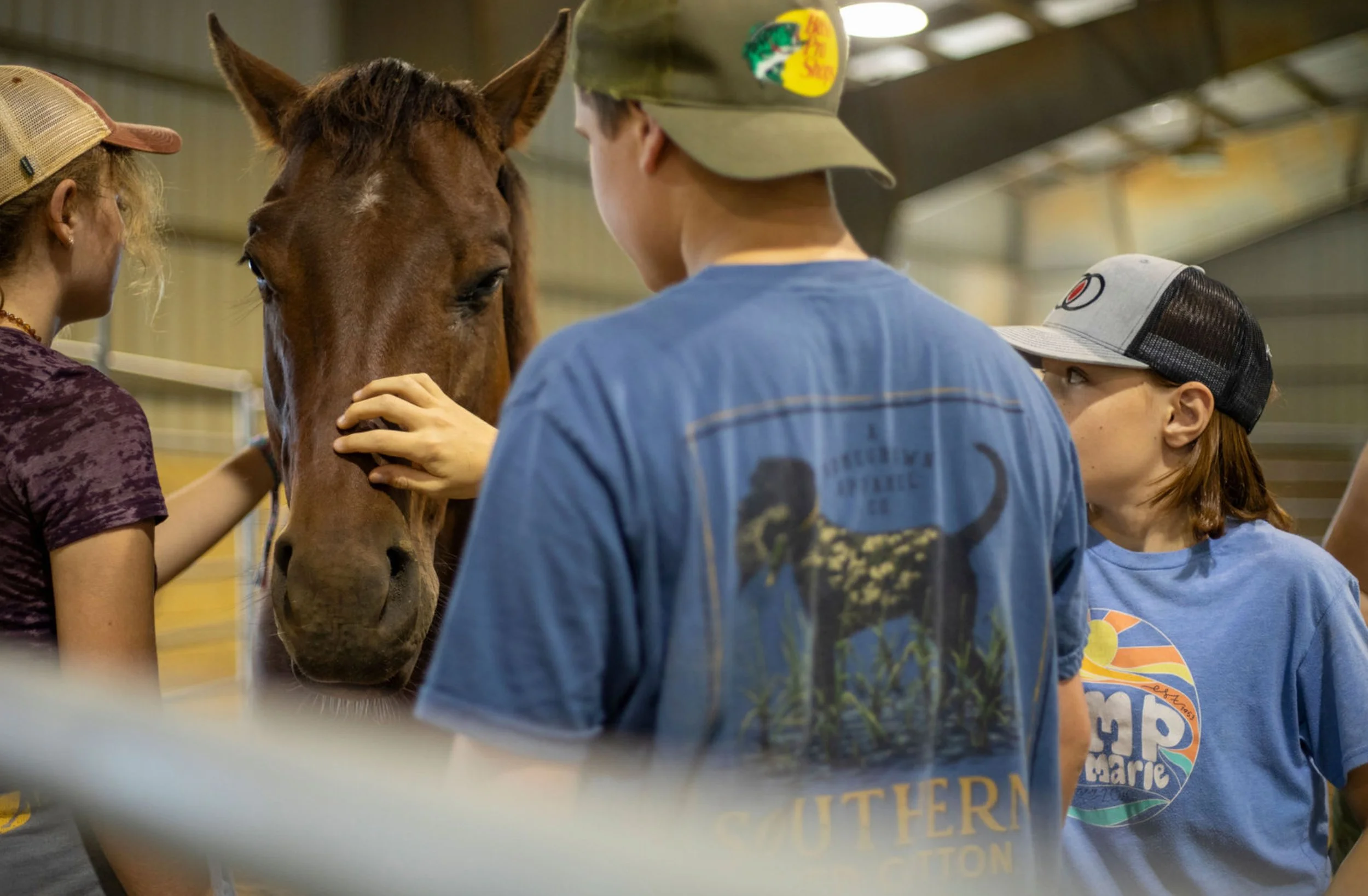At One Herd, we prioritize data-driven, evidence-based practices to ensure our programs and coaching deliver measurable, impactful results that foster sustainable growth and leadership development.
Experiential Learning:
Experiential Learning is an evidence-based learning model that incorporates traditional didactic methods along with active experiences and reflection to explore and connect abstract theories to real-life applications. Though learning has occurred in this way throughout all of human history, the first official model of experiential learning is attributed to the published work of educational theorist David Kolb (Kolb, 1984). The model holds that learning occurs when an individual engages in an active experience, reflects on the experience, and has an opportunity to re-engage with the experience. Since its introduction in 1984, this model has successfully withstood years of testing and research with very little modification. It is the foundational model for many successful programs (such as the 4-H program), and has been incorporated into countless schools and corporations.
Biomimicry:
Biomimicry is the practice of observing nature to find solutions to human problems. Humans have been practicing biomimicry for the entire history of our species - it is one of our greatest skills and it has been central to our survival (Benyus, 2002). Even without instruction, we are innately adept in the practice of biomimicry. Though our world has become increasingly complicated, nature still holds inspiration to so many of the challenges we face. One of our central challenges remains the navigation of social networks:
How do we achieve clarity in communication?
How do we connect with people at a distance?
How do we make corrections without creating anxiety?
How do we manage conflict without damaging relationships?
How do we keep people engaged and excited?
How do we empower people?
How do we create communities that feel safe for everyone?
How do we leverage individual strengths while maintaining focus on a shared goal?
How do we create belonging, for both ourselves and for others?
While these challenges may seem distinctly human, in fact the healthy navigation of social networks is a core challenge of many social species. We can observe and participate in the methods of other social creatures and apply what we learn to our own realities. In doing so, we can discover (or rediscover) methods of establishing, strengthening, and navigating our social bonds to the betterment of ourselves and our communities.
Equine Assisted Learning is an experiential approach to learning that promotes the development of life skills for educational, professional, and personal goals through activities with horses.
Equine Assisted Learning:
Equine Assisted Learning is an experiential approach to learning that promotes the development of life skills for educational, professional, and personal goals through activities with horses. There is a large body of research exploring the motivating and therapeutic effect of animals – this research has more recently come to include specific data on the benefits of working with horses. Indeed, there is mounting evidence to support the notion that horses can help individuals develop emotional growth, increase self-efficacy, and improve the quality of life (Bizub and Davidson, 2003).
In addition, Levinson (1997) found that equine activities also allow individuals to test and improve their self-management abilities, their motor coordination, and their executive functioning (as cited in Rothe et al., 2005, p. 375). The positive impact of horses doesn’t end there. Experiential learning with horses has been shown to help individuals recognize maladaptive behaviors, feelings, and attitudes; this experience then allows individuals to explore and practice alternatives to break these maladaptive patterns (Rothe et al., 2005).
With many adolescents, but particularly with identified “at-risk” adolescents, the opportunity to recognize and break maladaptive patterns is vital for positive long-term outcomes. Of particular interest when working with disempowered populations, Bates (2002) noted that by identifying with a powerful creature such as the horse, or, as Mallon (1992) elaborated, when experiencing mastery over a powerful creature such as a horse, individuals feel empowered and capable, both of which can have long-reaching positive effects for a variety of outcomes (as cited in Rothe et al., 2005, p. 377).
With horses, there also appears to be a particular impact on communication. Ianuzzi and Rowan (1991) noted that one of the ways in which horses impact individuals is through the emphasis on nonverbal communication – the necessity of nonverbal communication when working with horses calls attention to the process and allows for an in-depth conversation on how we use our bodies to communicate; this conversation can be motivated by the individual’s desire to interact with the horse and does not rely on a pre-existing motivation to communicate with other people (as cited in Rothe et al., 2005, p. 381). This focus can certainly impact leadership skills, but it also encourages individuals to reconsider their own communicative power and allows those who have felt silenced to rediscover their voice.
Coaching Efficacy:
A broad survey by the International Coaching Federation found that 80% of people who receive coaching report increased self-confidence and over 70% report improvements in work performance, relationships, and communication skills.
Annual Report (2009). International Coaching Federation.
An international survey of coaching outcomes revealed that clients report coaching helped them in the following areas: improve their relationships (72%), communication skills (72%), interpersonal skills (71%), work performance (70%), work/life balance (67%), and wellness (63%). (2009 ICF Global Coaching Study)
Global Coaching Study (2009). International Coaching Federation.
A study of 391 coaching recipients demonstrated that coaching can "improve psychological well-being, while mitigating threats to mental health such as excessive and prolonged stress, low resilience, and poor satisfaction with life."
A.M. Jeannotte et al. (2012). "Time to change for mental health and well-being via virtual professional coaching: Longitudinal observational study'. Journal of Medical Internet Research.
Executive coaching was found to help women improve their work satisfaction, personal well being, and work performance.
Bonneywell, S. (2017) 'How a coaching intervention supports the development of female leaders in a global organization'. International Journal of Evidence Based Coaching and Mentoring.
References:
Bagley, C., & Tremblay, P. (2000). Elevated rates of suicidal behavior in gay, lesbian, and bisexual youth. Crisis: The Journal Of Crisis Intervention And Suicide Prevention, 21(3), 111-117
Bates, A. (2002). Of patients and horses: Equine –facilitated psychotherapy. Journal Psychosocial Nursing and Mental Health Services, 40, 16-19.
Benyus, J. M. (2002). Biomimicry: innovation inspired by nature. New York, Perennial.
Bizub, A. L., Joy, A., & Davidson, L. (2003). ‘IT’S LIKE BEING IN ANOTHER WORLD’: DEMONSTRATING THE BENEFITS OF
THERAPEUTIC HORSEBACK RIDING FOR INDIVIDUALS WITH PSYCHIATRIC DISABILITY. Psychiatric Rehabilitation Journal, 26(4), 377.
Busseri, M.A., Willoughby, T., Chalmers, H., & Bogaert, A.R. (2006). Same-sex attraction and successful adolescent development. Journal of Youth and Adolescence, 35, 563–575.
Hansen, A. L. (2007). School-based support for GLBT students: A review of three levels of research. Psychology In The Schools, 44(8), 839-848.
Human Rights Campaign. (2012). Growing Up LGBT in America. Retrieved from: hrc.org.
Iannuzzi, D. and Rowan, A. (1991). Ethical issues in animal-assisted therapy programs. Anthrozoos, IV, 154-163.
Kolb, D. A. (1984). Experiential learning: Experience as the source of learning and development (Vol. 1). Englewood Cliffs, NJ: Prentice-Hall.
Levinson, B. (1997). Pet-oriented child psychotherapy. Springfield, IL: Charles C. Thomas Publishers, Ltd.
Mallon, G. P. (1992). Utilization of animals as therapeutic adjuncts with children and youth: A review of the literature. Child & Youth Care Forum, 21, 53-67.
Resnick, M.D., Bearman, P.S., Blum, R.W., Bauman, K.E., Harris, K.M., Jones, J., et al. (1997). Protecting adolescents from harm; Findings from the National Longitudinal Study on Adolescent Health. Journal of the American Medical Association, 278, 823–832.
Rothe, E., Vega, B., Torres, R., Soler, S., & Pazos, R. (2005). From kids and horses: Equine facilitated psychotherapy for children. International Journal Of Clinical And Health Psychology,5(2), 373-383.
Ryan, C., & Futterman, D. (1998). Lesbian and gay youth: Care and counseling. Philadelphia: Hanley & Belfus.







